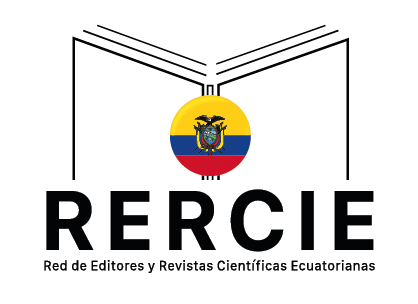Estudio de la carga mental de trabajo en personal de un Centro de Televisión
DOI:
https://doi.org/10.36097/rsan.v1i60.3044Palabras clave:
salud mental, fatiga mental, salud ocupacional, estrés laboral, Ergonomía CognitivaResumen
En los últimos años, se ha prestado atención a las enfermedades laborales emergentes, especialmente a los riesgos laborales relacionados con la carga mental. Esta investigación tiene como objetivo evaluar la carga mental de trabajo en trabajadores del Centro de Televisión del municipio de Cárdenas, Cuba. Se siguió un procedimiento que constó de 3 etapas, donde en la primera se eligió la muestra a estudiar mediante exámenes físicos y psicológicos, en la segunda se aplicó los indicadores seleccionados a cada individuo antes y después de la jornada laboral y en la tercera se analizaron los resultados obtenidos con herramientas estadísticas como el Excel y el software SPSS. Los resultados del estudio indicaron diferencias significativas en la muestra antes y el después de la jornada laboral, principalmente en los puestos de trabajo Director y Especialista en Ciencias Informáticas con niveles elevados de carga mental a los que se le debe dar seguimiento, lo que evidencia la existencia de carga mental. A partir del estudio realizado se comprobó las afectaciones que puede provocar las demandas cognitivas del puesto de trabajo a la salud de los trabajadores y la necesidad de aplicar medidas preventivas para reducir estos efectos negativos.
Descargas
Referencias
Acosta Prieto, J. L., García Dihigo, J., Almeda Barrios, Y., & Cuello Cuello, Y. (2023). Diseño de equipos para medir indicadores psicofisiológicos valorativos de carga mental de trabajo. Revista Universidad y Sociedad, 15(1). https://rus.ucf.edu.cu/index.php/rus/article/view/3772
Acosta Prieto, J. L., García Dihigo, J., Cuello Cuello, Y., Almeda Barrios, Y., & Ulloa Felipe, A. B. (2023). Application of indicators associated with mental fatigue in sanitary personnel from Heroes del Moncada Polyclinic in Cárdenas municipality, Cuba. DYNA, 90(226), 107-114. https://doi/10.15446/dyna.v90n226.106638
Almirall, P., Santander, J. & Vergara, A. (1995). La variabilidad de la frecuencia cardiaca como indicador del nivel de activación ante el esfuerzo mental. Revista Cubana Higiene y Epidemiología, 33, 3-4. http://scielo.sld.cu/scielo.php?pid=S1561-30031995000100002&script=sci_arttext
Charles, R. L. & Nixon, J. 2019. Measuring mental workload using physiological measures: A systematic review. Applied ergonomics, 74, 221-232. https://doi.org/10.1016/j.apergo.2018.08.028
Duarte, S. M. & Vega, M. Á. (2021). Perspectivas y retos de la NOM-035-STPS-2018 para la atención de riesgos psicosociales y la promoción de entornos organizacionales favorables en México. Trascender, contabilidad y gestión, 6, 48-86. https://doi.org/10.36791/tcg.v0i17.101
Durán, A. A., Maldonado, A. A., Barajas, M. A. & Hernández, J. L. (2019). Análisis cognitivos de carga mental e identificación del error humano para mejorar la experiencia de usuario. CienciaUAT, 14, 71-84. https://doi.org/10.29059/cienciauat.v14i1.1173
García, J. (1988). La ergonomía del personal dedicado a tareas intelectuales vinculadas a la industtria azucarera. Tesis Doctoral, Universidad de Matanzas.
Miret, M. T. (2021). La salud mental de los periodistas se resiente por los efectos de la pandemia. Cuadernos de periodistas: revista de la Asociación de la Prensa de Madrid, (42), 31-43. https://dialnet.unirioja.es/servlet/articulo?codigo=7981899
Montoya, N., Zuluaga, L. & Rivera, D. (2020). Periodismo y competencias mediáticas: una aproximación desde contexto colombiano y ecuatoriano. Revista de Comunicación, 19, 185-206. http://dx.doi.org/10.26441/rc19.1-2020-a11
Moreno, M. R., Lores, Y. & Caballo, F. A. (2021). La gestión integrada de calidad, ambiente, seguridad y salud en el trabajo con enfoque de liderazgo. RILCO DS: Revista de Desarrollo Sustentable, Negocios, Emprendimiento y Educación, 3. https://doi.org/https://doi.org/10.51896/rilcods
NC ISO 45001. (2018). Sistema de gestión de la seguridad y salud en el trabajo - Requisitos con orientación para su uso. https://www.iso.org/standard/63787.html
Ormaza, M. P., Zambrano, A. D., Zamora, S. C., Parra, C., Félix, M. (2019). Carga mental de profesores de la Escuela Superior Politécnica Agropecuaria de Manabí. Ingeniería Industrial, 40 (1), 3-13. http://scielo.sld.cu/scielo.php?pid=S1815-59362019000100003&script=sci_arttext&tlng=en
Parra, L. E. & Álvarez, F. J. 2021. Síndrome de la sobrecarga informativa: una revisión bibliográfica. REV NEUROL, 73, 421-428. https://doi.org/10.33588/rn.7312.2021113
Ramazzini, B. (2001). De morbis artificum diatriba diseases of workers. American journal of public health, 91(9), 1380-1382. https://ajph.aphapublications.org/doi/full/10.2105/AJPH.91.9.1380
Rodríguez Hernández, A. G., Sosa Ramírez, Y., & Viña Brito, S. J. (2021). Intensidad del trabajo de conocimiento en la gestión de seguridad y salud en el trabajo. Revista Cubana de Salud Pública, 47(3). http://scielo.sld.cu/scielo.php?pid=S0864-34662021000300012&script=sci_arttext&tlng=en
Rojas, R., Valdés, H. & Reyes, L. 2021. Digital Transformation: Opportunity or Threat to Employability? Revista Facultad de Ingeniería, 30. https://doi.org/10.19053/01
Van, J. J. & Sweller, J. 2012. Cognitive load theory in health professional education: design principles and strategies. Medical education, 44, 85-93. https://doi.org/10.1111/j.1365-2923.2009.03498.x
Vega, M. L. 2020. ¿El trabajo es salud? Archivos de Prevención de Riesgos Laborales, 23, 410-414. https://dx.doi.org/10.12961/aprl.2020.23.04.01
Descargas
Publicado
Número
Sección
Licencia
Derechos de autor 2024 Dayana de la Caridad Domínguez Rivera, Yilena Cuello Cuello, Juan Lázaro Acosta Prieto , Vania Verde Acebedo, Elieser Arguelles Sánchez

Esta obra está bajo una licencia internacional Creative Commons Atribución-NoComercial-SinDerivadas 4.0.















